|
Hydraulic Systems
Training Course Manuals
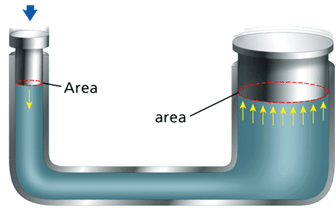
With
bonus hydraulics basics video included for free!
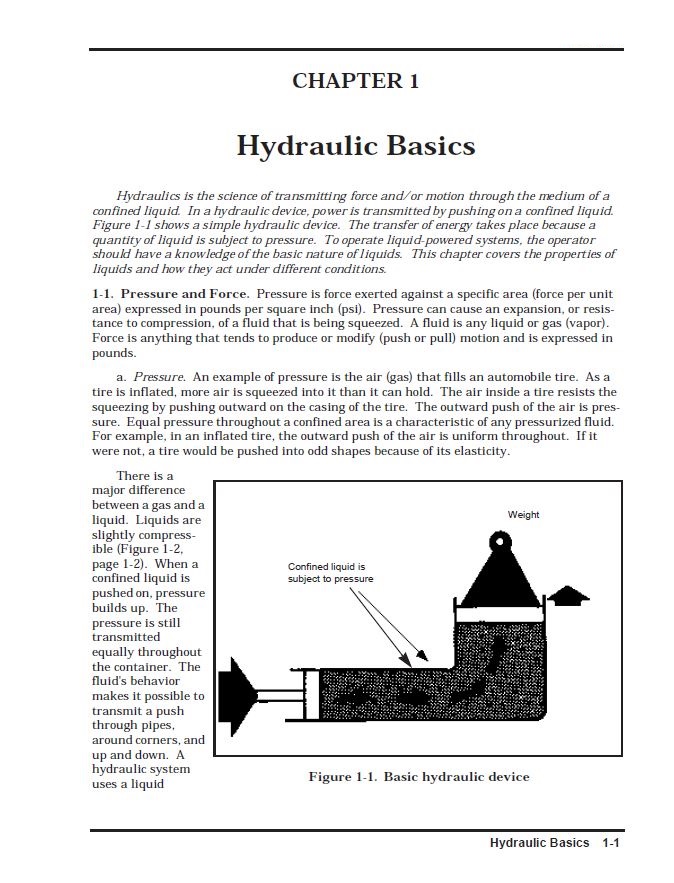
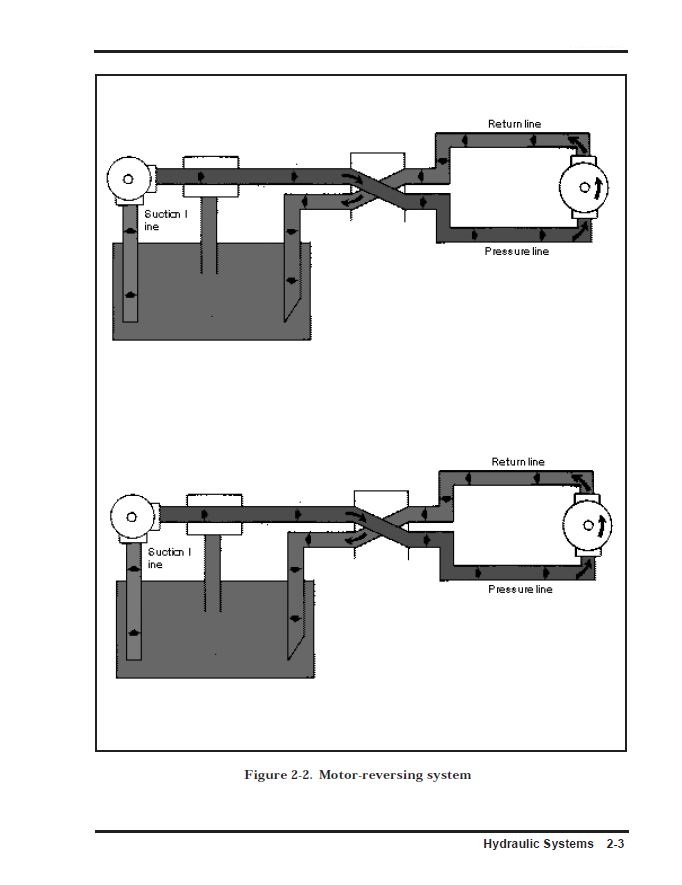
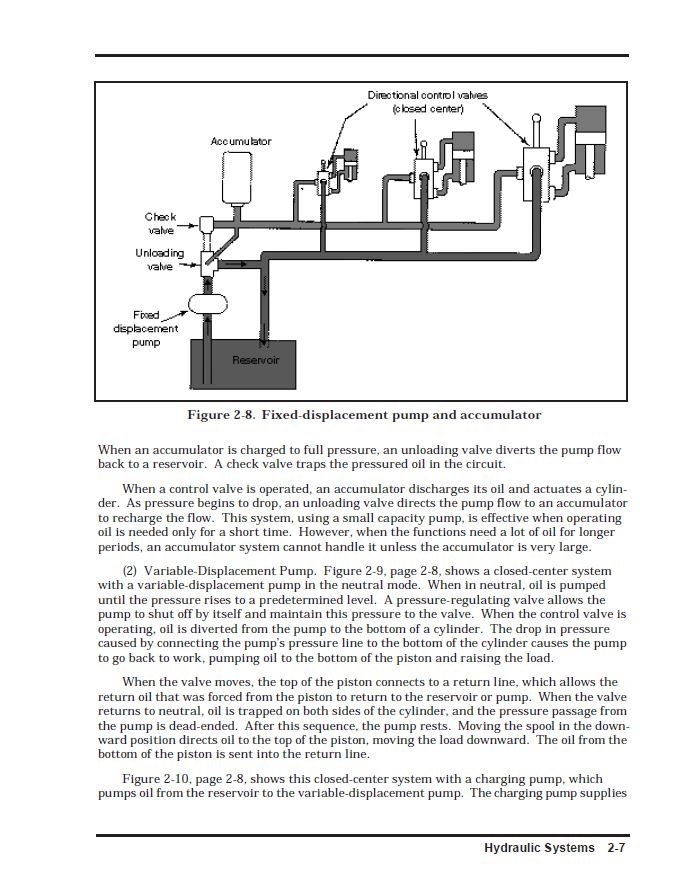
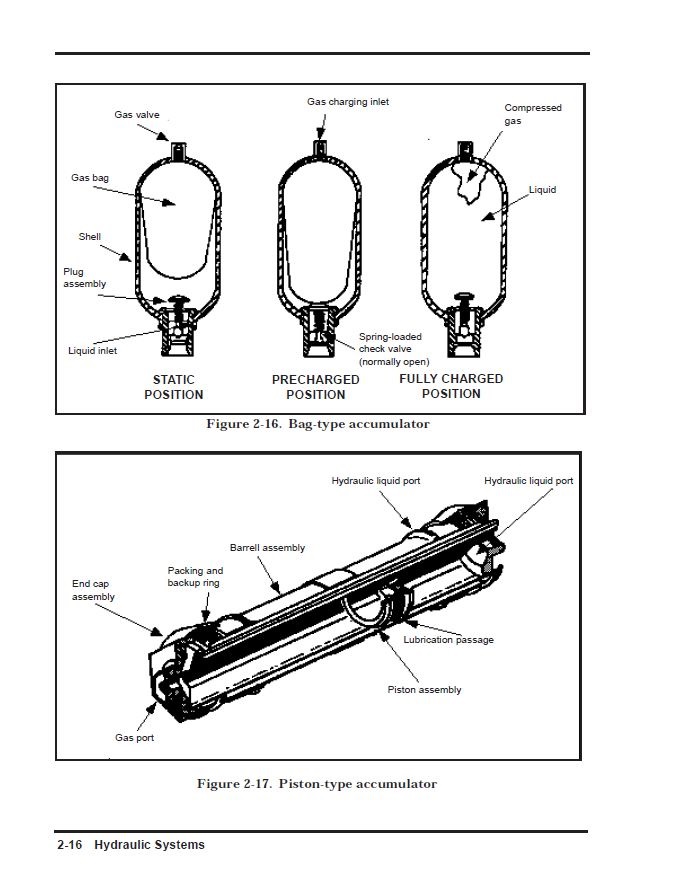
30 Course Books Included!
|
Intro to Hydraulics COURSE
manual
(174 page course
book)
This manual serves as a guide
for personnel who operate and maintain equipment
using hydraulic-powered control systems. It
includes general information covering basic
hydraulics and describes the properties and
characteristics of fluids and several types of
pumps, motors, valves, and controls. This manual
also deals with piping, tubing, and hoses used
to convey fluid under pressure. It describes the
functions and types of reservoirs, strainers,
filters, and accumulators. It discusses the
purposes and types of seals and packings used in
fluid power systems.
-
CHAPTER 1. Hydraulic Basics
-
Pressure and Force
-
Pascal's Law
-
Flow, Velocity, Flow Ration
-
Energy, Work, and Power
-
CHAPTER 2. Hydraulic Systems.
- Basic Systems
- Hydraulic Jack
- Motor-Reversing
Sytems
- Open and Closed
Center Systems
- Color Coding
- Leakage, Seals,
etc.
-
CHAPTER 3. Pumps
-
Pump Classifications
-
Performance
-
Displacement
-
Slippage
-
Designs
-
Gear Pumps, etc
-
CHAPTER 4. Hydraulic Actuators
-
Cylinders
-
Construction
-
Application
-
Maintenance
-
Hydraulic Motors
-
CHAPTER 5. Valves
-
Pressure Control Valves
-
Directional Control Valves
-
Flow Control Valves
-
Valve Installation
-
Valve Failures and Remedies
-
Valve Assembly
-
CHAPTER 6. Circuit Diagrams and
Troubleshooting
-
Hydraulic Circuit Diagrams
-
USASI Symbols
-
Typical Mobile Circuits
-
Troubleshooting
-
CHAPTER 7. Electrical Devices:
Troubleshooting and Safety
-
Hydraulics and Electricity
-
Troubleshooting Electrical Devices
-
Ground
-
Safety



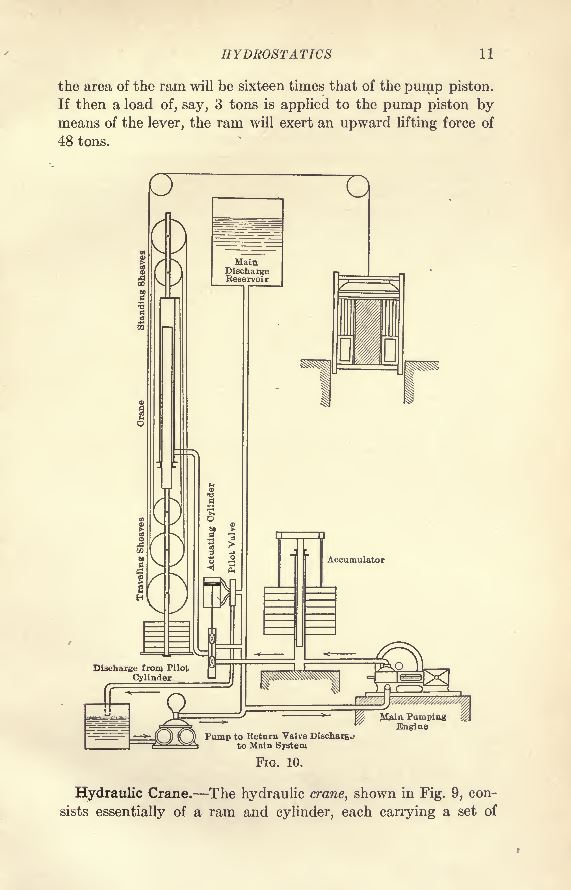 |
DESIGN OF HYDRAULIC
STEEL STRUCTURES COURSE MANUAL (53 Page Course Book)
This manual prescribes guidance for (a)
designing hydraulic steel structures (HSS) by
load and resistance factor design (LRFD) and (b)
fracture control. Allowable stress design (ASD)
guidance is provided as an alternative design
procedure or for those structure types where
LRFD criteria have yet to be developed.
- Chapter 1.
Introduction
- Purpose
- Applicability
- References
- Background
- Chapter 2.
General Considerations
- Limit States
- Corrosion
- Dynamic Loading
- Inspection and
Maintenance
- Deviations from
Prescribed Design
- Chapter 3. Load
and Resistance Factor Design
- General
- Design Basis
- Strength
Requirements
- Reliability Factors
for HSS
- Serviceability
Requirements
- Fatigue and
Fracture Control
- Chapter 4.
Allowable Stress Design
- General
- Design Basis
- Load and Stress
Requirements
- HSS Types:
Modifications for Allowable Stresses
- Serviceability
Requirements
- Fatigue and
Fracture Control
- Chapter 5.
Connections and Details
- General
- Design
Considerations
- Bolted Connections
- Welded Connections
- Appendix A.
References
- Appendix B. Load
and Resistance Factor Design Criteria for
Miter Gates
- Appendix C. Tainter
Gates
- Appendix D. Tainter
Valves
- Appendix E.
Bulkheads and Stoplogs
- Appendix F.
Vertical Lift Gates
- Appendix G.
Hydroelectric and Pumping Plants
- Appendix H. Flood
Closure Structures
- Appendix I.
Miscellaneous Hydraulic Steel Structures
|
BASIC HYDRAULICS AND
HYDRAULICS PLUMBING COURSE MANUAL (76 Pages)
In this lesson you will learn the definition of
hydraulics, its basic applications and
characteristics, and the types of hydraulic
fluid used.
- Lesson 1. Basic
Hydraulics
- Lesson 2. Hydraulic
Plumbing
|
|
TIME HISTORY DYNAMIC
ANALYSIS OF CONCRETE HYDRAULIC STRUCTURES
COURSE MANUAL
(401 Pages)
In this lesson you
will learn
how hydraulic structures are
designed to withstand earthquake forces in
critical applications.
|
|
HYDRAULIC DESIGN OF
FLOOD CONTROL CHANNELS
COURSE MANUAL (183 Pages)
This manual presents procedures for the design
analysis and criteria of design for improved
channels that carry rapid and/or tranquil flows
- Chapter 1.
Introduction
Purpose, Scope, References, Explanation
of Terms, Channel Classification,
Preliminary Investigations for Selection of
Type of Improvement
- Chapter 2. Open
Channel Hydraulic Theory
Physical Hydraulic Elements, Hydraulic
Design Aspects, Flow Through Bridges,
Transitions, Flow in Curved Channels,
Special Considerations, Stable Channels
- Chapter 3.
Riprap Protection
- Section I -
Introduction, General, Riprap
Characteristics
Section II - Channel Characteristics, Side
Slope Inclination, Channel Roughness, Shape,
Alignment, and Gradient
- Section III -
Design Guidance for Stone Size, General,
Design Conditions, Stone Size, Revetment Top
and End Protection
- Section IV -
Revetment Toe Scour Estimation and
Protection, General, Revetment Toe
Protection Methods, Revetment Toe Protection
Design, Delivery and Placement
- Section V - Ice,
Debris, and Vegetation, Ice and Debris,
Vegetation
- Section VI -
Quality Control, Quality Control
- Chapter 4.
Special Features and Considerations
Sediment Control Structures, Air
Entrainment, Hydraulic Jump in Open
Channels, Open Channel Junctions, Hydraulic
Model Studies
- Chapter 5.
Methods For Predicting N Values For the
Manning Equation
Introduction, Approach, Hydraulic
Roughness by Handbook Methods, Base n Values
(nb) for Channels, Hydraulic Roughness by
Analytical Methods, Composite n Values and
Hydraulic Radius, Expansion and Contraction
in a 1-D Model, Unforeseen Factors
- Appendix A.
References
- Appendix B. Plates
- Appendix C. Notes
on Derivation and Use of Hydraulic
Properties by the Alpha Method
- Appendix D.
Computer Program for Designing Banked Curves
for Supercritical Flow in Rectangular
Channels
- Appendix E. Theory
of Combining Flow at Open Channel Junctions
(Confluences
- Appendix F. Report
on Standardization of Riprap Gradations
- Appendix G.
Velocity Estimation Based on Field
Observations
- Appendix H.
Examples of Stone Size Calculations
- Appendix I.
Notation
|
|
HYDRAULIC DESIGN OF LOCK CULVERT
VALVES COURSE MANUAL(59 Pages)
The purpose of this manual is to
present hydraulic design data on control valves
for navigation lock filling and emptying
systems.
-
Chapter 1. Introduction
Purpose, Applicability. References.
Typical Filling and Emptying System, Types
of Lock Valves
-
Chapter 2. Air in Culvert
Systems
Experience with Air in Culvert System,
Recent Field Tests of Cavitation Conditions,
Selection of Elevation for Culvert Valves,
Conclusions and Recommendations Regarding,
Admission of Air into Culvert System, Design
of Air Vents
-
Chapter 3. Hoist Loads
Hoist Loads due to Flowing Water,
Tainter Valves, Interpretation of Data,
Horizontally Framed Valve, Double Skin-Plate
Valve, Vertically Framed Valve, General
Comments, Total Hoist Loads, Peak Head
Across Valve
-
Chapter 4. Valve Seals
General, Bottom Seals, Side Seals. Top
Seals
-
Chapter 5. Recesses For
Unwatering Bulkheads
General, Bulkhead Recesses, Location of
Bulkhead Recesses
-
Appendix A. Cavitation At
Lock Culvert Valves
-
Appendix B. Lock Filling
Program
-
Appendix C. Design Examples
|
|
BASIC HYDRAULIC SYSTEMS AND
COMPONENTS COURSE MANUAL
(67 Pages)
After completing this course, you will
demonstrate a knowledge of the basic components
of the hydraulic system, including the devices
which actuate, discharge, and control the flow
of hydraulic fluid and those devices which
sense, control, and limit hydraulic pressure
-
Lesson
1. Hydraulic Reservoirs, Filters, Pumps,
Accumulators, and Motors
-
Lesson
2. Basic Construction and Operation of
Hydraulic Actuating Devices, Flow Control,
and Directional Devices
-
Lesson
3. Hydraulic Pressure-limiting, Controlling,
and Sensing Devices
|
|
BASIC HYDRAULIC SYSTEMS AND
COMPONENTS
COURSE MANUAL (193 Pages)
This course provides guidance on engineering
procedures for the hydraulic design of
navigation dams.
-
Chapter 1. Introduction
Section I - General
Purpose, Applicability, References,
Bibliography, Symbol, Other Guidance and
Design Aids, WES Capabilities and Services,
Design Memorandum Presentations
Section II - Typical Navigation Projects
Navigation Dams, Basic Project Components,
Supplemental Project Components
Section III - Special Considerations,
Safety, Environmental, Aesthetics
-
Chapter 2. Project Identification
Section I - Navigation Systems
Section II - Project Purposes
Section III - Project Studies
Project Water Requirements, Pool Levels,
Pool Storage, Environmental, Foundations
-
Chapter 3. Project Parameters
Section I - Hydrology
Basin Description, Hydrologic Data,
Hydrologic Data Sources, Hydrologic Model,
Flow Computations
Section II - Hydraulics
Channel Discharge Rating Curves,
Water-Surface Profiles, Specific Profile
Uses, Navigation Pool Level Stability
Section III - Sedimentation
Problems, Sediment Data Needs, Sedimentation
Study, Analysis Tool, Sediment Control
Measures
Section IV - Ice Conditions
-
Chapter 4. Project Layout (siting of
Structures)
Upper Pool Elevation, Navigation
Considerations, Foundations, Sediment
Movement, Channel Rectification, Channel
Stabilization
-
Chapter 5. Project Design
Section I - Spillway Design
Crest Design, Spillway Capacity for
High-Head Dams, Spillway Capacity for
Low-Head Dams, Pool Tailwater Relationships,
Pool Elevations, Discharge Rating Curves for
Gated, Broad, Crested Weirs, Overflow
Embankments, Stilling Basin Design, Approach
Area, Exit Area, Spillway Gates, Gate Types
and Selection, Tainter Gate Design,
Vertical-Lift Gate Design, Spillway Piers,
Abutments
Section II - Design of Other Appurtenances
Navigable Passes, Low-Flow and Water Quality
Releases, Fish Passage Facilities, Ice
Control Methods
Section III - Model Studies
Section IV - Example Design
-
Chapter 6. Project Construction
Section I - General
Flow Diversion Schemes, Maintenance of
Navigation, Construction Phases
Section II - Cofferdams
General Schemes, Cofferdam Heights,
Cofferdam Preflooding Facilities, Example
Determination of Cofferdam, Heights, Scour
Protection
Chapter 7. Project Operation
Section I - Normal Spillway Operations
Maintenance of Navigation Pool Levels,
Low-Flow Periods, Flood Flow Periods, Ice
and Debris Passage
Section II - Special Spillway Operations
Purpose, Loss of Scour Protection, Operator
Error, Equipment Malfunction, Spillway
Maintenance, Emergency Operation
Chapter 8. Repair and Rehabilitation
General, Design Life, Modernization
Features, Typical Repair and Rehabilitation
Items, Scour Protection, Repair and
Rehabilitation Model Studies
-
Appendix A. Bibliography and Selected
References
-
Appendix B. Notation
-
Appendix C. Navigation Dam Model and
Prototype Study Data
-
Appendix D. Typical Spillway Optimization
Study
|
|
HYDRAULIC DESIGN OF RESERVOIR
OUTLET WORKS COURSE MANUAL (201 Pages)
This manual presents guidance
for the hydraulic design analysis of reservoir
outlet works facilities. The theory, procedures,
and data presented are generally applicable
to the design of similar
facilities used for other purposes.
-
Chapter 1. Introduction
Section I - General, Purpose,
Applicability, References, Bibliography,
Symbols, Other Guidance and Design Aids. WES
Capabilities and Services, Design Memorandum
Presentations, Classification of Conduits,
Section II - Project Functions and Related
Studies
-
Chapter 2. Hydraulic
Theory
Section I - Introduction, General. Basic
Considerations
Section II - Conduits Flowing Partially
Full, General, Discharge Controls for
Partially Full Flow, Flow Profiles,
Section III - Conduits Flowing Full,
General, Exit Portal fiessure Grade-Line
Location
Section IV - Gradients, General, Hydraulic
Grade Line and Energy Grade Line, Mean
Pressure Computation
Section V - Energy Losses, General, Surface
Resistance (Friction), Form Resistance
Section VI - Cavitation, General, Theory,
Design Practice, Preventive Measures,
Boundary Layer, Air Demand, Air Flow
-
Chapter 3. Sluices For
Concrete Gravity Dams
Section I - Basic Considerations,
Location, Size, Shape, ad Number, Elevation
and Alignment
Section II - Sluice Intakes, General, Trash
Protection, Entrance Curves, Intake Energy
Losses
Section III - Gate Passage, Gates, and
Valves, General, Gate Types, Control Valves,
Metering Devices, Gate Passageway
Requirements, Gate Slots, Gate Recess, Gate
Seats, Steel Liners, Air Vents, Section IV -
Sluice Outlet Design, General
Considerations, Exit Portal Constructions,
Sluice Eyebrow Deflectors
-
Chapter 4. Outlet
Facilities For Emb~kment Dams
Section I - Basic Considerations,
Approach Channel, Conduits and Tunnels for
Embankment Dams
Section II - Intake and Gate Facilities,
Intake Structures, Intake Tower Versus
Central Control Shaft, Submerged Intakes,
Combined Intake and Gate Structure,
Underground Control Structures, Downstream
Control Structures, Gate Passageway
Requirements, Low-Flow Releases
Section III - Entrance Shapes, General,
Selection of Entrance Shape for Design,
Linear Sidewall or Pier Flare
Section IV - Control Gates, General, Gate
Lip Geometry, Vertical-Lift Gate Discharge,
Computations, Commercial Gates, Hydraulic
Load for Vertical-Lift Gates, Vibration of
Cable-Suspended Gates
Section V - Transitions, General, Entrance
and Intake Transitions, In-Line Transitions,
Exit Transition
-
Chapter 5. Energy
Dissipation and Downstream Channel
Protection
Section I - Energy Dissipators, General,
Hydraulic-Jump Type Stilling Basins,
Low-Head Structures
Section II - Outlet Channel, General,
Riprap, Side-Slope Erosion
-
Chapter 6. Selective
Withdrawal Structures
Types, Design, FloW Regulation, Model
Investigations
|
HYDRAULIC DESIGN OF
NAVIGATION LOCKS COURSE MANUAL (196 Pages)
- Chapter 1. Introduction
Section I - General, Purpose, Scope,
Applicability, References, Explanation of
Terms, Technical Data
Section II - Technical Coordination,
General, Automatic Data Processing (ADP, WES
Capabilities and Services, Design Memorandum
Presentations
Section III - Project Function, General,
Primary Components, Special Needs,
Classification Systems, CE Lock Operating
Experience
- Chapter 2. Project Identification
Section I - Design Management, General,
Design Constraints, Incremental Effects,
General Studies
Section II - Navigation System
Characteristics, Information and Data
Required, Waterway, Vessels, Commodities
Section III - Transit Time, Definition,
Evaluation, Chamber Performance, Application
Section IV - Chamber Alternatives
General, Number of Parallel Chambers,
Chamber Dimensions, Chamber Types
Section V - Foundation and Structure
Concerns, Hydraulic Loading, Chamber
Structure, Guide and Guard Walls, Other
Structures
- Chapter 3. Hydraulic Features
Section I - Filling and Emptying,
Project Type, Design Type, Lateral Culverts,
Features, Recent Designs
Section II - Appurtenant Concerns, General,
Navigation Aids, Surge Reduction, Impact
Barriers, Water Saving, Dewatering,
Emergency Closure, Debris Control, Ice
Control
- Chapter 4. Filling-and-emptying
Feature Design
Section I - Preliminary Calculations,
General, Sill Spacing Parameters, Sill
Spacing, Location of Intake Structures, Lock
Filling, Chamber Depth, Sill Elevation, Sill
Elevation Guidance, Location of Outlet
Structures, Typical Outlet Locations
Section II - Very-Low-Lift Designs, General,
Sector Gate Design Concept, Hydraulic
Evaluation, Side-port Flume (SPF) Designs
Section III - Culvert-to-Chamber Systems,
General, Chamber Port Arrangements, Flow
Passage Areas, Chamber Ports, Baffles
and Manifolds
Section IV - Outlet Systems, General, Design
Types
Section V - Intakes, General, Design Types
Section VI - Filling-and-Emptying Valve
Systems, General, Valve Sizing, Valve Siting
Section VII - Culvert Layouts, General,
Contracting and Expanding Systems, Other
Transitions
- Chapter 5. Special Hydraulic Study
Topics
Section I - Introduction, Baseline
Analysis, Baseline Constraints, Analysis
Results
Section II - Steady Flow in Lock Culverts,
Discharge, Energy Loss Coefficient,
Individual Losses, Reynolds Number,
Energy-Loss Coefficient Values
Section III - Lock Filling and Emptying,
General Features, Valve Operation, Lock
Coefficient, Operation Time Estimates, Basis
For Numerical, Simulations, Mathematical
Aids
Section IV - Culvert Features, Goals,
Improved Performance, Evaluation
Section V - Valve Hydraulic Characteristics,
Design Concerns, Valves With Expansions,
Downstream
Section VI - Low Pressure Effects, General
Concerns, Reverse Tainter Valves
Section VII - Air Inflow and Outflow
Devices, High-Lift Lock Air Vents, Low-Lift
Lock Air Vents
Section VIII - Vorticity at Intakes,
General, Evaluation
Section IX - Energy Dissipation at Outlets,
Conditions, Options
- Chapter 6. Hydraulic Model Studies
Section I - Introduction
General, Purpose of Model Study, Scales,
Model and Prototype Similarities, Model
Construction, Instrumentation, Pressure
Measurements
Section II - Prototype Expectations,
General, Revisions to Scaled Values
Section III - CE-Sponsored Hydraulic Model
and Prototype Studies, Database
Chapter 7. Other Hydraulic Design Features
Section I - Surge Reduction, Scope,
Solutions, Computational Aids
Section II - Impact Barriers, Purpose
Section III - Water Saving, Water Supply,
Design Needs
Section IV - Dewatering, Concerns,
Coordination
Section V - Emergency Closure, General
Emergency Situations, Consequences of Pool
Loss, Preliminary Studies, Types of Closure
Systems, Design Loadings
Section VI - Ice Control at Locks, Types of
Ice, Ice Problems, Air Screen, Lock Wall
De-icing, Lock Gate and Valve De-icing,
Considerations for Rehabilitation and New
Construction
Section VII - Repair and Rehabilitation,
Purpose and Scope, Reliability Improvement,
Efficiency Improvement, Threshold Amounts,
Typical Study Items
Section VIII - Environmental Concerns,
Effect of Lock, Water Quality, Recreational
Craft, Facility Alternatives, Second Lock
Chamber
- Appendix A. References
- Appendix B. Inventory of Existing Locks
- Appendix C. Lock Hydraulic System Model
and Prototype
- Appendix D. Design of Side-Port Systems
- Appendix E. Design of High-Lift Locks
- Appendix F. Computer Runs
- Appendix G. Mechanical Lifts
- Appendix H. Notation
|
|
Inspection, Evaluation, and
Repair of Hydraulic Steel Structures Course Manual (133 Pages)
This manual
describes the inspection, evaluation, and repair
of hydraulic steel structures, including
preinspection identification of critical
locations (such as fracture critical members and
various connections) that require close
examination.
-
Chapter 1. Introduction
Purpose,
Applicability,
Distribution,
References,
Background,
Mandatory Requirements
-
Chapter 2. Causes of Structural Deterioration
Corrosion,
Fracture,
Fatigue,
Design Deficiencies,
Fabrication Discontinuities,
Operation and Maintenance, Unforeseen Loading
-
Chapter 3. Periodic Inspection
Purpose of Inspection,
Inspection Procedures,
Critical Members and Connections,
Visual Inspection,
Critical Area Checklist,
Inspection Intervals
-
Chapter 4. Detailed Inspection
Introduction,
Purpose of Inspection,
Inspection Procedures,
Inspector Qualifications,
Summary of NDT Methods,
Discontinuity, Acceptance Criteria for Weldments
-
Chapter 5. Material and Weld Testing
Purpose of Testing,
Selection of Samples from Existing Structure,
Chemical Analysis,
Tension Test,
Bend Test,
Fillet Weld Shear Test,
Hardness Test,
Fracture Toughness Test
-
Chapter 6. Structural Evaluation
Purpose of Evaluation,
Fracture Behavior of Steel Materials,
Fracture Analysis,
Linear-Elastic Fracture Mechanics,
Elastic-Plastic Fracture Assessment,
Fatigue Analysis,
Fatigue Crack-Propagation,
Fatigue Assessment Procedures,
Evaluation of Corrosion Damage,
Evaluation of Plastically Deformed Members,
Development of Inspection Schedules,
Recommended Solutions for Distressed Structures
-
Chapter 7. Examples and Material Standards
Determination of Fracture Toughness,
Example Fracture Analysis,
Example Fatigue Analysis,
Example of Fracture and Fatigue Evaluation,
Structural Steels Used on Older Hydraulic Steel
Structures
-
Chapter 8. Repair Considerations
General,
Corrosion Considerations,
Detailing to Avoid Fracture,
Repair of Cracks,
Rivet Replacement,
Repair Examples
|
|
HYDRAULIC DESIGN OF SMALL BOAT
HARBORS COURSE MANUAL
(132 Pages)
-
Chapter 1. Introduction
Purpose and Scope,
Applicability,
References,
Bibliography,
Symbols,
Terminology,
Background
-
Chapter 2. Design Factors
Design Rationale,
Typical Project Elements,
Physical Data to be Evaluated
-
Chapter 3. Design Studies
General,
Typical Engineering Studies,
Water Levels and Datums,
Waves,
Currents,
Shoreline Changes,
Sediment Budget and Channel Shoaling,
Design Vessel or Vessels,
Baseline Surveys,
Design Life, Level of Protection, and Design
Conditions,
Channel Width,
Channel Depth,
Channel Alignment,
Turning Basin,
Moorage or Anchorage Area,
Basin and Breakwater Layout,
Breakwater Design,
Ice,
Dredging and Disposal,
Sand Bypassing,
Environmental Impacts,
Physical Hydraulic Models,
Mathematical Models,
Lessons Learned,
Operation and Maintenance
|
HYDRAULIC DESIGN OF
SPILLWAYS COURSE MANUAL (170 Pages)
- Chapter 1. Introduction
Section I - General,
Purpose,
Applicability,
References,
Bibliography,
Symbols,
Other Guidance and Design Aids,
WES Capabilities and Services,
Design Memorandum Presentation
Section II - Spillway Function, Classification,
and Related Studies,
General,
Spillway Function,
Spillway Classification,
Related Studies
- Chapter 2. Hydraulic Theory
Section I - Introduction,
General,
Basic Considerations
Section II - Spillway Discharge,
General,
Abutment and Piers,
Effect of Approach Flow
Section III - Gradients,
General,
Hydraulic and Energy Grade Lines,
Mean Spillway Pressure Computation
Section IV - Spillway Energy Loss,
General,
Energy Loss for Fully Developed Turbulent
Boundary Layer Flow,
Turbulent Boundary Layer Development Energy Loss
Section V - Hydraulic Jump Energy Dissipator,
General,
Hydraulic Jump Type Energy Dissipator,
Sidewall Dynamic Load
Section VI - Cavitation,
General,
Cavitation Damage,
Cavitation Damage Prevention
- Chapter 3. Spillway Crest
Section I - Introduction,
General
Section II - Crest Characteristics,
General,
Crest Shape,
Crest Discharge Coefficient
Section III - Spillway Piers, Abutments, and
Approach,
General,
Contraction Coefficients,
Spillway Bay Surge,
Spillway Approach
Section IV - Spillway Crest Pressures,
General,
Controlled and Uncontrolled Crests
Section V - Upper Nappe Profile,
General,
Nappe Profile
- Chapter 4. Spillway Chute
Section I - Basic Considerations,
General,
Sidewalls,
Convergent and Divergent Chutes
Section II - Chute Spillways,
General,
Invert and Water Surface Profile,
Invert Pressure
- Chapter 5. Specialized Spillways
Section I - Side Channel Spillways,
General,
Crest Design,
Channel Design
Section II - Limited Service Spillways,
General,
Discharge,
Erosion,
Control Section
Section III - Shaft Spillways,
General,
Morning-Glory Outlet
Section IV - Labyrinth Spillway,
General
Section V - Box Inlet Drop Spillways,
General
- Chapter 6. Crest Gates,
General,
Tainter Gates,
Vertical Lift Gates,
Ice and Wave Forces on Gates
- Chapter 7. Energy Dissipators
Section I - Basic Considerations,
General,
Design Discharge,
Operation
Section II - Stilling Basins,
General,
Horizontal Apron Basin,
Sloping Aprons,
Baffles,
End Sills,
Sidewalls,
Wing Walls,
Exit Channel,
Abrasion and Cavitation
Section III - Roller Buckets,
General,
Bucket Depth and Radius,
Slotted Buckets,
Exit Channel
Section IV - Flip Buckets,
General,
Bucket Geometry,
Discharge Considerations,
Trajectory Distance,
Bucket Pressures,
Exit Channel,
Miscellaneous
Section V - Specialized Energy Dissipators,
Impact Basin,
Baffled Chute
|
LUBRICANTS AND HYDRAULIC
FLUIDS COURSE MANUAL (300
Pages)
This manual
provides guidance on lubricants and hydraulic
fluids.
-
Chapter 1. Introduction
Purpose, Application References,
General, Mandatory Requirements
-
Chapter 2. Friction and Mechanisms of
Weareeeeeeeeee
Friction and Objective
of Lubrication, Sliding Friction, Friction
and Factors Affecting Friction, Rolling
Friction, Wear, Types of Wear.
-
Chapter 3. Principles of Lubrication
Lubrication and Lubricants, Hersey Sribeck
Curve, Hydrodynamic Lubrication, Thrust
Bearings and Journal Bearings, Boundary
Lubrication, Elastohydrodynamic Lubrication,
Mixed Lubrication.
-
Chapter 4. Lubrication Oil Basics and
Production
-
Chapter 5. Lubricant Additives
-
Chapter 6.
Filtration
-
Chapter 7. Oil Monitoring and System
Sampling and Testing
-
Chapter 8. Oil Storage, Handling, Disposal,
and Safety
-
Chapter 9. Turbine Oils
-
Chapter 10. Hydraulic Fluids
-
Chapter 11. Grease
-
Chapter 12. Solid Lubricants and Self
Lubricated Materials
-
Chapter 13. Environmentally Acceptable
Lubricants
-
Chapter 14. Gear Lubricants
-
Chapter 15. Bearing Lubrication
-
Chapter 16. Misc Lubrication Applications
-
Chapter 17. Operation, Maintenance, and
Selection Considerations
|
RIVER HYDRAULICS COURSE
MANUAL (176 Pages)
- Chapter 1. Introduction
Purpose,
Scope,
Applicability,
References,
Needs for River Hydraulic Studies,
General Methods,
Organization
- Chapter 2. Introduction to River Hydraulics
Introduction,
Flow Dimensionality Considerations,
Water Waves,
Flow Classification,
Regimes of Flow,
Types of Flow,
Classification of Flow Profiles,
Basic Principles of River Hydraulics
- Chapter 3. Formulating Hydraulic Studies
Initial Considerations,
Overview of Techniques for Conducting,
River Hydraulics Studies,
Analysis of Hydraulic Components,
Data Requirements,
Calibration of Hydraulic Analysis,
Models,
Guidelines for Analytical Model,
Selection
- Chapter 4. Multidimensional Flow Analysis
Introduction,
Limitations of One-Dimensional,
Analysis,
Equations of Flow,
Significance of Terms,
Use of Equations of Flow,
Two-Dimensional Flow Conditions,
Available Computer Programs,
Data Requirements,
Data Development and Model,
Calibration,
Example Applications
- Chapter 5. Unsteady Flow
Section I - Introduction,
Introduction,
Steady Versus Unsteady Flow Models,
Conditions that Require Unsteady Flow Analysis,
Geometry
Controls,
Boundary Conditions,
Steps to Follow in Modeling a River System,
Accuracy of Observed Data,
Calibration and Verification,
Example Applications of Unsteady Flow Models
Section II - Theory of Routing Models,
Introduction,
Unsteady Flow Model,
Diffusion Model,
Kinematic Wave Model,
Accuracy of Approximate Hydraulic Models,
Muskingum-Cunge Model,
Hydrologic Routing Schemes
- Chapter 6. Steady Flow - Water Surface Profiles
Section I - Introduction,
Scope,
Assumptions of the Method,
Standard-step Solution,
Range of Applicability,
Example of Steady Flow Water Surface,
Profile Study
Section II - Data Requirements,
Introduction to Data Requirements,
Flow Regime,
Starting Conditions
Section III - Model Development,
Data Sources,
Data and Profile Accuracy,
Model Calibration and Verification
Section IV - Special Problems,
Introduction to Special Problems,
Bridge Hydraulics,
Culvert Hydraulics,
Limits of Effective Flow,
Channel Controls,
River Confluences,
Changing Flow Regime,
Ice-covered Streams
- Chapter 7. Water Surface Profiles With Movable
Boundaries
Section I - Introduction,
Similarities and Differences Between Fixed and
Mobile Bed Computations
Section II - Theoretical Basis,
Sediment Transport Functions
Section III - Data Requirements,
General Data Requirements,
Geometric Data,
Bed Sediment Data,
Boundary Conditions Data,
Data Sources,
Data and Profile Accuracy
Section IV - Model Confirmation and Utilization,
Model Performance,
Development of Base Test and Analysis of
Alternatives
Section V - Computer Programs,
Introduction,
Scour and -ion in Rivers and Reservoirs,
Open Channel Flow and Sedimentation
- Appendix A
- Appendix B
- Appendix C
- Appendix D
|
|
STRENGTH DESIGN FOR
REINFORCED CONCRETE HYDRAULIC STRUCTURES COURSE Manual (138 Pages)
- Chapter 1. Introduction
- Chapter 2.
Details of
Reinforcement
- Chapter 3.
Strength and
Serviceability Requirements
- Chapter 4.
Flexure and Axial Loads
- Chapter 5. Shear
|
|
A Treatise on
Hydraulics, by James Hector Hughes, 1911, 555
pages |
|
Elements of Hydraulics,
by SE Slocum, 1915, 318 pages |
|
Handbook of Hydraulics
for the Solution of Hydraulic Problems, by
Horace King, 1918, 450 pages |
|
Hydraulic Design of Deep
Draft Navigation Projects, 212 pages |
|
Hydraulic Manual, by
Lowis Jackson, 1883, 510 pages |
|
Hydraulics for Engineers
and Engineering Students, by FC Lea, 1916, 584
pages |
|
Hydraulics Volume 1, by
Stanley Dunkerley, 1907, 352 pages |
|
Hydraulics Volume 2, by
Stanley Dunkerley, 1908, 265 pages |
|
Hydraulics, by FC Lea,
1908, 555 pages |
|
Hydraulics, by Robert L.
Daughert, 1919, 307 pages |
|
Retaining and Flood
Walls, 448 pages |
|
Tidal Hydraulics, 154
pages |
|
INSTRUCTIONAL VIDEO ALSO INCLUDED:
Hydraulics, by
Chevrolet, Instructional video on the basics of
hydraulic principles





 
 |
This is a
must have reference for anyone going into the Hydraulics
technician field.
If you
have been thinking about starting technical school for
repairing and and working on Hydraulic Systems, why not get a
head start with these self paced classes? This
course material will give you a leg up on your fellow
students in class and allow you to finish your training
faster and better than the other students.
Neatly organized titles as shown, on one easy to use
CD.
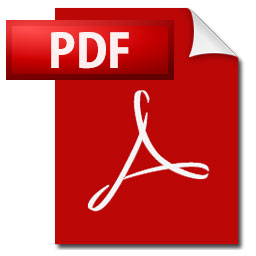 |
All books are
PDF
format that you know and trust, for easy reading and printing.
No
unknown or strange file formats!
Please ensure you have the latest copy of Adobe Reader installed on your
machine (it is free online).
FORMAT NOTICE:
This disk is only for use in your computer's
drive! It will NOT play in the DVD Player hooked up to
your TV or in your car! |
|











